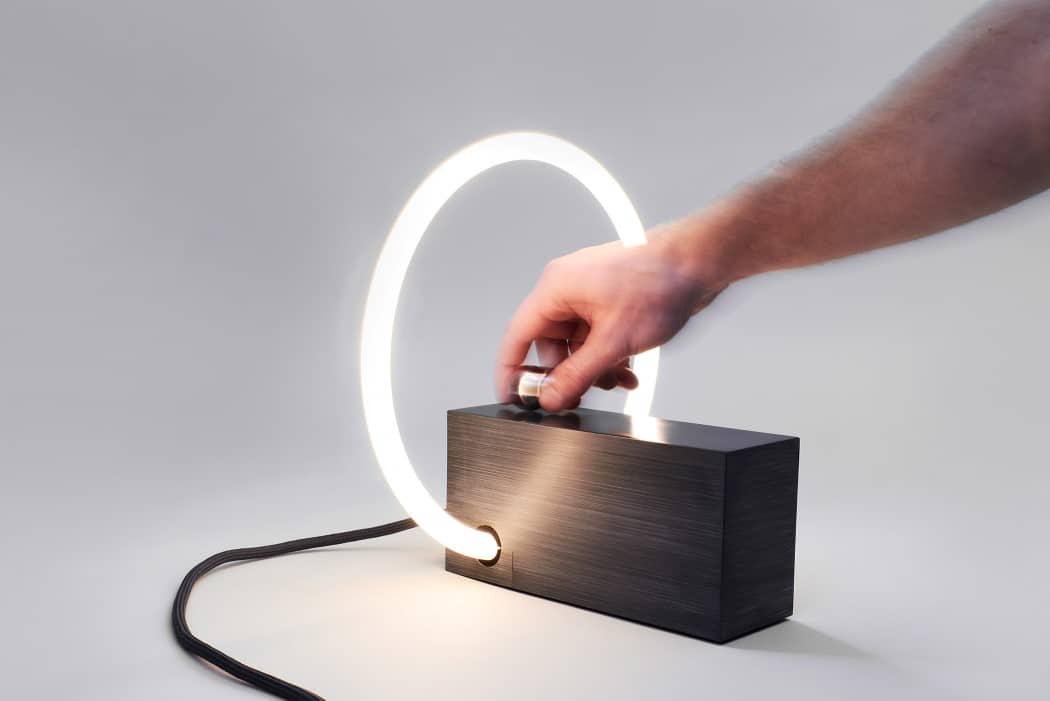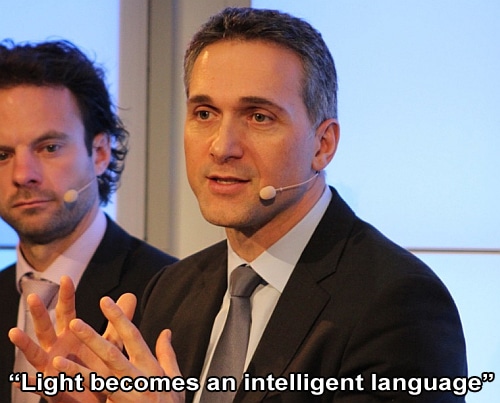Have you seen or used any of Wybron’s NexeraLX luminaires? Nexeras have dichroic CMY mixing, are DMX addressable, and come in spot and wash configurations. Nexera is convection cooled, and can be fitted with a ceramic gas discharge metal halide lamp, mechanical dimmer, and ballast for install situations.

Aaron at Wybron sent me a press release for Houston’s Lakewood Church; they’re using 48 Nexeras:

There are churches, there are megachurches, and then there are megachurches.
Houston’s Lakewood, the country’s largest church and the home of Joel Osteen, falls firmly in the latter category. With a weekly attendance of approximately 43,000 people, they make their home in the former Compaq Center, previously home to the Houston Rockets. And the job of lighting services in the 16,000-plus-seat arena, many of which have to perform the double duty of being recorded for broadcast and providing an intimate experience for worshipers? That falls to Chuck Pryor and his team.
“My production background is mainly in audio,” Pryor says, “So my team has a lot of fun making all the standard lighting/audio jokes to keep things light and fun. I was actually hired in audio but was invited to manage the Lighting Department when Tom Stanziano, the previous Lighting Director, left. Tom was the one who originally specified theses fixtures to accomplish the goals, and he obviously made a great call. I still split my time between lighting and audio, so having Josh Beard and Ryan Johanningmeier here to do all of the maintenance and programming makes it all come together pretty nicely. These guys are both really talented and we are fortunate to have them.”
Juggling sound and lighting in such a large venue certainly poses challenges. For the not-inconsiderable task of lighting the Lakewood stage-a lighting system that uses, all told, over 700 individual fixtures and must light dozens of performers-Pryor relies in part on 48 Wybron Nexeras, a move that Pryor calls a “perfect solution.”
“The Nexeras have one very important role at Lakewood,” Pryor says. “These are used to light the curtain that millions of people see each week on the broadcast. The Lakewood blue curtain that hangs behind the globe is lit exclusively by the Nexera fixtures. We also use eight of these fixtures as band front wash when color is needed.”
The “blue curtain” that Pryor mentions is a sort of visual trademark of Lakewood, a backdrop to the ever-present bronze globe and the activity that takes place on the stage-and which is a recognized symbol of the church to the millions of viewers who tune in to broadcasts of Lakewood’s services.
“The main technical difficulty we had was lighting our curtain evenly and having the ability to color mix smoothly. The fact that the Nexeras can throw 60 feet allows us to do this and light the entire curtain evenly.”
The vibrant color and smooth mixing provided by Nexera’s dichroic glass filters translates to a dynamic and reliable platform for Lakewood’s ultimate raison d’etre: the dissemination of their ministry’s message to the thousands of people in their congregation and the millions who tune into their broadcasts. “Obviously they have to work in harmony to have the most impact, and lighting can really help set the mood in the congregation,” says Pryor.
Although Lakewood is by any measure a large organization, with the trappings attendant to one, it’s the message that counts; the hundreds of lights, the pro-quality sound, the music, the technical accoutrements and flash are there simply to support it. And to do this, like so many other churches across the continent, Lakewood turned to Wybron.
I’m interested in hearing more about the Nexera – any hands on experience with the fixture?





Jim I have demoed these units before. My impression was they put out very nice light, but the color mixing is slow and transitioning between mixes gets you some white colors in the middle. They use a linear movement sliding the dichroics straight up and down, so if you have ever used a Coemar CMY heads which use a similiar idea with 2 plates moving at each other, you tend to get a white or pale transition between. The Sea changer seems to deal with this better as they are very fast and rotate in and out instead of slide. Now I haven’t checked these out in about 5 years,but that is what I found. They are nice, but if you need quick changes, i don’t think it’s the right option.
JP,
If it has been five years since you demoed the units, you had some of the first units out there. Numerous advances have been made since then including better output and better color mixing capability. As far as the speed issue, our engineers choose to dampen the speed so as to avoid a high-pitched whine when the dichroics move. There are actually three speeds that are accessible in the menu, low, high and super-high with the super-high speed being comparable to SeaChanger (<1 sec). Since pretty much nobody assigns a time to their fixtures, I suggest setting the speed on super-high and adjusting the time in your cues.
If you or anyone else would like to take a look at the Nexera, I would be more than happy to set you up with a demo unit.
Dusty Hudgins
Sales Manager
Wybron, Inc.
dusty@wybron.com
719-884-6480 Direct
Dusty,
Thanks for the clarification. yes the units I had demoed were 5 years ago. I love the size of the fixture and was impressed with the output. Thats great to know about the advances in the color mixing. I find the seachanger a little steep for my clients budgets, so I will have to check out the newest nexeras when I have time or maybe at LDI this fall.
Again, thanks for the updated info.
JP
Jim, I would like to added a comment and to clarify a few things about the article. I was the Lighting Director at Lakewood Church for over 7 years before moving on to Seachanger to help develop the worship segment.
When designing the Lakewood Church system, the church brought it legendary designer Bill Klages. He originally specified the Wybron CXI color mixing scroller. The scrollers were fine for our original application but as we got settled in to the space it was difficult to get from one end of the color spectrum to the other without passing “0” or white. Using a Grand MA I was able to adjust the speed on each scroll but just didnt work smoothy for our live to tape TV Broadcast. After about 2 years and numerous problems with motors, I contacted Dusty about the CXI and we came to the conculsion to change out the scrollers to Nexeras. These units workout better for the application.
Before leaving Lakewood I was introduce to The Seachanger products, I viewed them in the space and realized that using the Seachanger with ETC Leko out performed the Nexera optically and the color match my VL better. I had been able to install about 10 fixtures to enhance the color washes on the platform.
Nexera VS. Seachanger: (I have spoken to Dusty about this very thing) The price of Nexera and price of Seachanger is about the same, the differences are you need to purchase a power supply for the Nexera where Seachanger has an on board power supply. With the Seachanger you need to buy a Source 4 (if you dont have any already)
Seachanger Wash comes as a unit using a fresnel lens for the manual zoom of 20-70 degree.
Other differences, Seachanger works with any ETC 750 Source 4 unit and can change lens tubes easliy from 5-90 degrees, Its 4 channels of DMX CYM+XG.The XG or Extreme Green wheel expands the color Gamut to allow more of the RGB spectrum and uses 1 amp of power. Can be used with a HPL 750 Lamp with additional heat build up. WIth the Seachanger there is less than 8% of light loss out the fixture due to the patented optics.
Seachanger comes in several favors: Profile standard XG 95% color saturation used mostly in theatrical applications to achieve pastel colors and Studio XG 100% color saturation for those concert and Television designer that need the little extra.
With the Launch of Seachanger Nemo it will drive the market into waters never before entered. The Nemo is the one of the first to use Plasma Lamp Technology. The lamp, the size of a tic tac uses 180 watts of power but produces over 10, 000 lumens of white light. The total power for the entire fixture is 300w. Again used with the Seachanger Color Engine to enhance the concerts, church services, theatrical presentations and now architectual, and musuem applications. Nemo produces no IR or UR Rays and has a lamp life of over 15,000. This fixture combines the benefits of LEDs and the controlliblity of an ellipsoidal.
Please call me for a personal demo
Tom Stanziano
Seachanger
727-488-1630
In my haste I omitted an important word. “Can be used with a HPL750 lamp with NO additional heat build up.
Comments are closed.